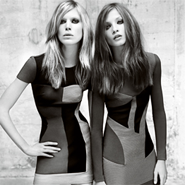
A noted luxury analyst disagreed with a theory espoused by Santo Versace, chairman of Gianni Versace Group and the Altagamma Foundation, about the three-tier approach to luxury marketing.
In meeting held in Milan by the EMEA group of IPREX, a trade body of public relations firms, Mr. Versace defined the three tiers as accessible luxury, aspirational luxury and absolute luxury. However, Pam Danziger, president and founder of Unity Marketing, Stevens, PA, was not on the same page.
“I think that this is a crazy approach,” Ms. Danziger said. “I think that you really need to find out what your luxury brand really needs.
“There’s a whole new meaning of value in the luxury market today,” she said.
“People are looking for true quality and they can find that in all different price points.”
IPREX is one of the world’s major corporations of communications and public relations firms, with 70 partners and 89 offices throughout North and South America, Europe, the Middle East and Asia Pacific.
Gianni Versace is an international fashion label that designs accessories, clothing, fragrances, makeup and home goods.
Three tiers According to Mr. Versace, accessible luxury includes brands such as Tiffany & Co. and Burberry. It is a market segment that needs to be in constant contact with its audience, and needs to concentrate messages on product performance characteristics.
A primary communication tool for accessible luxury brands is advertising, closely linked with public relations and events.
Aspirational luxury brands include Gucci and Yves St. Laurent and are based on an imitative process, from opinion leaders and trendsetters to the customer base. Its marketing messages are enriched by aesthetic, stylistic, artistic and design content, as well as performance characteristics.
The goal should be to re-create the emotional and creative world of the brand and contain the cultural and psychological references that justify the price.
Aspirational brands should focus on communicating through public relations and events, with advertising taking a more back-seat role.
Absolute luxury brands, such as Hermes and Brioni, take a similar approach to aspirational brands, but a greater importance is placed on building the brand’s emotional environment. The aim is to create a perception of exclusivity and aesthetic content drives the marketing. Product characteristics are in the background of messaging.
Absolute brands do not advertise and they communicate primarily through public relations and events.

“These are old terms,” Ms. Danziger said. “It’s all about the values and if people are willing to embrace the values and become a part of those values and what the brand means to the consumer.”
If a brand has luxury values, then Ms. Danziger believes the tiers should not matter. She said that luxury brands should be more specific and specialized at risk of killing the brands.
“I do not like the terms aspirational and accessible,” said Ms. Danziger. “Like Tiffany’s, just because its accessible means that it doesn’t have the right to call itself luxury?
“That’s not true, it’s a meaningless term,” she said. “Everything is accessible with the Internet.
“A luxury brand can’t be all things to all people, it is a slippery slope to destruction, and I think that is what that three-tiered approach is saying,” Ms. Danziger said.
Final Take Kaitlyn Bonneville, editorial assistant at Luxury Daily, New York
